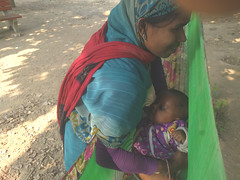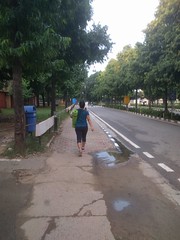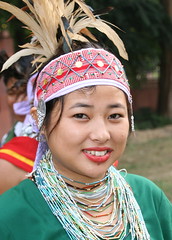Who Are The International Players in The Indian Female Genocide?
by Rita Banerji
[Note: This article was first published on Pickled Politics.]
Many assume The 50 Million Missing Campaign I run is about the female genocide – the mass and deliberate annihilation of women — in India. However, the Indian female genocide has become a global phenomenon today with many international players. Who are these international players and what are their roles?
Studies show that the gender ratios among Indians are extremely skewed against females in countries with sizeable Indian communities, like the U.K., the U.S., Norway and Canada.
In India the elimination is systemic and in many forms. But in expatriate communities, while issues like dowry violence and honour killings do exist, the most prevalent method of elimination is female feticide. The reason is, while western governments are compelled by law to deal with homicides, they are unwilling to address the systematic extermination of women through sex-selection.
A study published [subscription required] by researchers at Oxford University, reveals that 1500 girls went ‘missing’ from the Indian communities in England and Wales between 1990 and 2005. The 1500 figure indicates that 1 in 10 girls, who should have been born according to normal birth statistics, had been selectively aborted. The study raises another important question. This practice is not evident in the Bangladeshi and Pakistani communities in the U.K., even though all three countries share a common history and culture, and the same social preference for sons.
But how is this possible when sex-selection is illegal in the U.K.? The law banning sex-selection was first passed in 1993. Then in 2003 the Human Fertilisation and Embryology Authority (HFEA), the regulatory body for reproductive medicine in Britain, re-assessed the law. Their yearlong study also included a public survey. More than 80% of the British public was in favour of upholding the ban. Based on the HFEA report, the law was further tightened in 2007.
Some of the concerns raised by the British public were unhealthy gender demographics, and the endorsement of gender bias. These concerns manifest amply in India, where in another 20 years, men will outnumber women by 20%. The implications are immense. Rape is the fastest growing crime in India. And over the last 2 decades a domestic form of sex-trafficking has flourished that feeds the “bride market,” i.e. areas where men can’t find women to marry. Sometimes a “bride” is bought for a whole family of brothers to “share,” – a form of sexual, reproductive and domestic slavery that is astonishing legal! Worse still, as the gender ratio plummets in all Indian states, the bride-brokers are now trafficking girls from other countries, like Bangladesh.
Regarding the question of how the U.K. Indian gender-ratio got skewed notwithstanding the ban on sex-selection, it appears the expatriates are flying into India. Despite an even stronger ban on sex-selection in India, where doctors can’t disclose the gender of the foetus, there is a complicit network to cater to clients from the U.K. In a sting operation by the BBC where a pregnant British-Indian woman pretended to be seeking this service, she was told that the procedure was illegal, but that she would be referred to an abortion clinic if it’s determined to be a girl. Incidentally, the doctor who was also involved in grassroots movements against female feticide had been referred by the British High Commission in Delhi.
So, what good is Britain’s analysis and enforcement of the sex-selection ban if India indifferently violates its own law? Estimates of annual rates of female feticide in India vary from 500,000 to about 2 million [subscription required]. In 2010 there were only 107 cases registered, and of these just 16 convictions, with no evidence that these clinics were shut down or doctors suspended. Most disturbing is how this ‘woman-annihilating’ phenomenon has exploded into a multi-million dollar industry that includes and extends beyond India. American companies race to develop and sell newer and more accessible technologies, aggressively targeting India as a lucrative “market”. Countries like Thailand and the U.S.A. where sex-selection is legal provide packaged services. IVF doctors in Australia, a country with a large Indian population, desperate to tap into this profitable global business, are lobbying for Australia to over-turn its ban on sex-selection. Also, contrary to popular notions, it is not poverty but wealth that’s driving India’s female feticide. The largest gender gaps are among the wealthy middle and upper classes, who have the means to travel and purchase these services.
Given China’s equally mammoth role in this, and that together these two countries that account for 1/3 of the human race have already annihilated more than a 100 million women, there can be no doubt that female genocide today is an urgent issue of global concern. Article 2(d) of the 1948 U.N. Act on Genocide defines genocide as the prevention of the birth of a group. To stop female genocide will require legal accountability, an official global commitment, and a world-wide coordinated, concerted effort, like it would be for the genocide of any other human group.
There an urgent need to declare this an international human rights crises, and accordingly enforce laws globally with full legal accountability to stop this genocide?
ABOUT THE AUTHOR
Rita Banerji is an author and gender activist, and the founder of The 50 Million Missing Campaign to end India’s female genocide. Her book ‘Sex and Power: Defining History Shaping Societies,‘ is a historical and social look at how the relationship between gender and power in India has led to the ongoing female gendercide. Her website is www.ritabanerji.com She blogs at Revolutions in my Space and tweets at @Rita_Banerji















